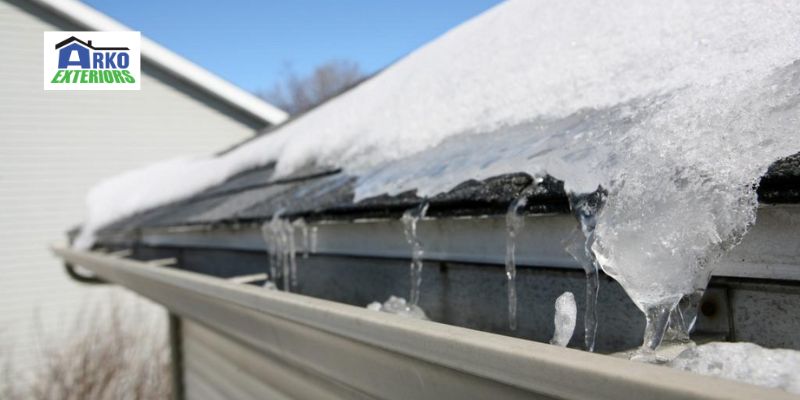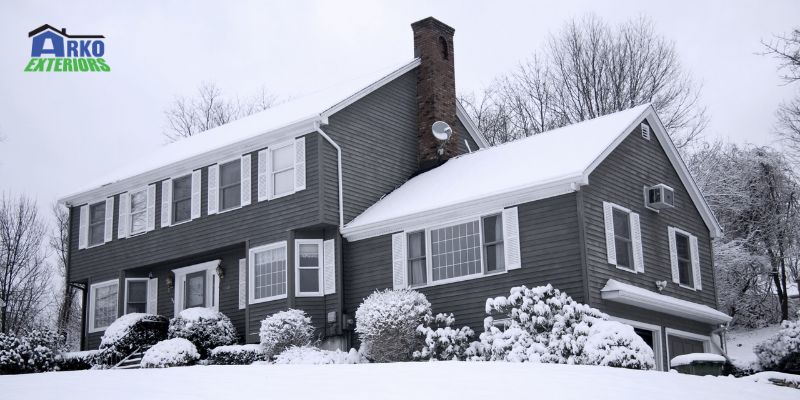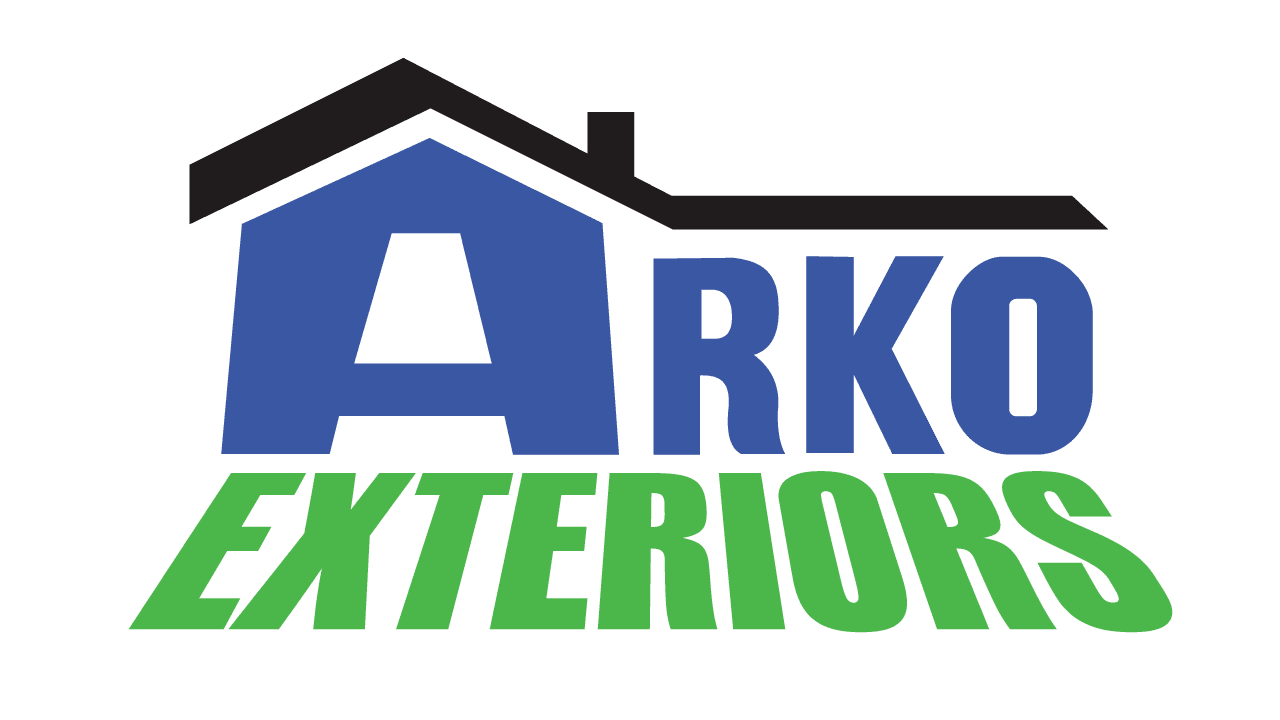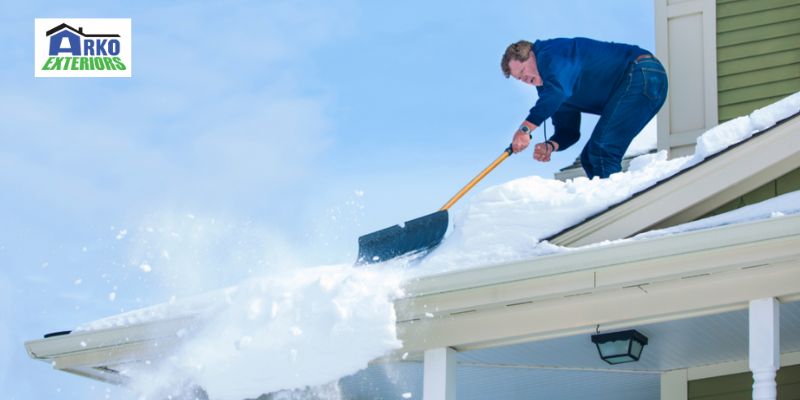Roofs are particularly susceptible to weather issues such as snow and ice. Consequently, managing roofing tasks during the winter season can be challenging. Whether it is the installation or maintenance of roofs, you must consider many natural elements, in addition to the potential disruptions caused by adverse weather conditions.
Winter Roof Issues & How To Prevent Them

Harsh winter conditions can cause roof-related issues. Bad weather can potentially result in substantial damage to your roof and property. Without a preventive maintenance plan in place, you could be vulnerable to issues such as leaks and damaged shingles, both of which can be costly to address.
Here are some common winter roof issues and steps you can take to prevent them.
1. Condensation
Condensation happens when an excess of moisture accumulates in the indoor air of your residence. As warm air rises and reaches the attic, it meets with the colder outdoor air, causing the moisture within the warm air to rapidly cool and condense into mist or water droplets. Oftentimes this condensation is mistaken for a roof leak. If left unattended, this moisture can infiltrate the attic space, leading to water damage and wood rot in the surrounding areas. Roof-related condensation issues can typically be resolved by installing efficient attic insulation to prevent the escape of heated indoor air into the attic.
Also, many homes may lack proper attic insulation, which can worsen the problem. If your home falls into this category, schedule an inspection to determine its insulation status and take corrective measures. Addressing condensation concerns on time not only protects your home but also promotes a healthier and more comfortable living environment.
2. Snow Buildup

Leaving a heavy amount of snow on your roof after a snowstorm can exert additional weight that exceeds your roof’s load-bearing capacity. This can cause your roof to collapse if not addressed in time. This risk becomes even more severe when ice accumulates alongside the snow.
One precaution is to use a roof rake to safely remove the snow from your roof. However, it is crucial to be careful during this process. Ensure that you remain on the ground while clearing snow from your rooftop. Prioritizing safety in snow removal efforts helps minimize the risk of accidents or structural damage to your roof.
By addressing heavy snow buildup on your roof, you protect your property and also ensure the well-being of those living within. Therefore, you make winter a safer and more secure season for your household.
3. Icicles
Although icicles look attractive in the winter landscape, they pose potential hazards when they fall on people or pets. Moreover, these frozen formations can forcefully detach your gutters from the house. To prevent the formation of icicles in the first place, make sure to conduct routine maintenance on your gutters and downspouts during the warmer months.
Once icicles have already formed they can be removed relatively easily. Their removal will get rid of the strain on your gutters and eliminate the risk of individuals passing under and getting impaled. Still, it is crucial to recognize that icicles might serve as indicators of a more significant issue: an ice dam.
An ice dam is a more complex problem arising from poor insulation and ventilation in your attic. Regular inspection and maintenance of your roofing and insulation can help mitigate the risks associated with icicles and ice dams during the winter season.
4. Ice Dams
Ice dams are one of the most concerning roofing issues during the winter season. These formations are essentially ridges of ice that develop along the edges of the roof. The primary cause of ice dams is insufficient insulation within the attic space.
In cases where your attic lacks proper insulation, warm air from the interior of the house can escape into the attic and increase the temperature of your roofing system. As this melted snow flows downward and reaches the edge of the roof edge, it loses the warmth from the attic and refreezes before it can reach the gutters. This results in the formation of an ice dam.
Once an ice dam is created, the process of snowmelt drainage is blocked. Rather, the meltwater accumulates and is forced beneath the shingles. This can result in significant water damage and structural issues. Therefore, to prevent this from happening, you must prioritize attic insulation as a preventive measure against ice dams.
5. Uncomfortable Temperatures
Your attic may have issues if you are experiencing discomfort in certain rooms of your home during the winter months, no matter how much you adjust the thermostat. Similarly, inadequate attic installation can be a problem if you have observed unusually high energy bills.
Your home’s outer roof, ventilation and insulation function as a cohesive system to effectively manage and maintain indoor temperatures. Many homes suffer from poor attic installation. To determine if your home suffers from insufficient insulation, you can either measure the existing insulation levels yourself or consult a professional contractor who can conduct an assessment.
Ensuring proper attic insulation is a vital step in enhancing your home’s comfort, reducing energy costs and optimizing the overall efficiency of your heating system, especially during the winter season. Addressing any insulation issues can make your living spaces more comfortable and lead to significant savings on your energy bills.
Summary:
Eave snow and ice management is an essential aspect of protecting your roof and home during the winter. By taking measures to prevent ice dams and ensuring proper insulation, you can protect your property from costly damage and enjoy a warmer, more comfortable winter indoors.

